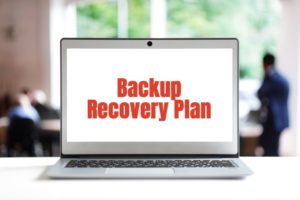In the modern world of cybercrime and digital business, the state of your company’s computers and servers is of vital importance. Should anything happen to your important files or critical servers, you would need to have them recovered and back online as quickly as possible. This is the purpose of a backup disaster recovery (BDR) plan. When something goes wrong, you need a backup to recover from the disaster.
However, not all BDR plans are made equally. Some are prepared only to recover specifically important files, some only backup the website and not the company files. Some are prepared to restore the systems of one department but not another. Each company and it’s IT team are responsible for ensuring that a recovery plan is in place for every possible eventuality. Because what you don’t plan for is always the most likely to be what trips you up.
Most businesses need not just one BDR plan, but may. In order to have a recovery method no matter what type of technical troubles or security breach cause a data disaster. So along these lines, ask yourself:
Is Your Disaster Recovery Plan Prepared For….
Restoring Key Files and Databases Individually?
All too often, company data disasters don’t involve reinstalling the entire system, but rather restoring one or two pieces of critical data. A software update may corrupt only the files that software interacted with, or only those that were open during the update. A human error might delete or save over a critical customer file, or a database might be lost when a server malfunctions.
Is your disaster recovery plan prepared to restore just one or two pieces of data from the entire backup? With the ability to do this, you can spot-recover key files and databases without losing time to restoring an entire data system or server.
Restoring an Entire Workstation to Work-Readiness?
Malware and failed updates often only affect the computer where the problem occurred. Malware on a workstation is often best solved with a factory reset and reinstallation of the operating system and some unfortunate software updates may lead to similar solutions. And restoring a single workstation is one of the coolest things backup recovery is capable of doing, if set up correctly.
Consider every workstation configuration in your company. Each workstation is made up of an operating system, security settings, and installed software to make it work-ready for an employee. Is your disaster recovery plan ready to restore a new or reset computer fully to work-readiness for workstations in each department? It can be.
Restoring Your Entire Network from a Factory Reset?
Some malware, however, specializes in attacking the entire company network accessed from the first infected workstation. Ransomware is notorious for this tactic though it is not alone in using it. When this type of attack happens, often the best defense for a company is to completely reset the network so that no malware can lurk upon it, then rebuilt it from the ground up using a backup recovery method.
Is your BDR plan prepared to restore the entire network infrastructure with all the finicky little settings and security measures your admins have spent months or years perfecting? Working with recovery experts, even this is possible and can allow you to thumb your nose at even the most vicious hacking attacks by restoring quickly without much impact on the company’s workflow.
Backup disaster recovery is not just a way to ‘make saves’ and then restore them when something goes wrong. They are delicate, detailed plans that involve careful setup, curation, and implementation. But if done correctly, you gain an incredibly flexible and robust defense against even those hacks that can fully take out a computer or your entire business network. Contact us today to find out more about how your BDR plan could be improved to cover more bases and provide a greater flexibility of recovery options.



